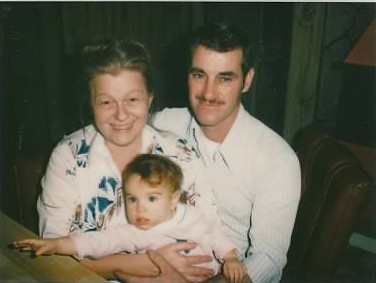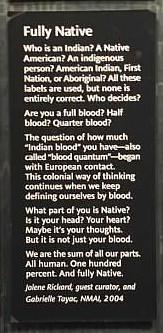You see, after my father (I love you, Dad!) read this post wherein I detail my Seneca roots, he shot me the following e-mail:
I had always heard that my grandfather Harry Faith was also Seneca. His father was 1/2 and his grandfather was full blooded. So if your grandmom's dad was 1/4 and her mom was 1/2, does that change anything?
I have a two-part answer to this question.
The first answer I thought of was this quote:
which I saw in the American Indian Museum in Washington, D.C. last September. So, no, it doesn't change anything, really.
But the second answer is found in the math. Yes, it does change things. But not by much.
If my Grandma had Seneca blood from both sides (which makes sense when you think about how her mother and father could have met through the tribe), with her father being 1/4 Seneca and her mother being 1/2 Seneca, she would have been more than 1/4 Seneca I originally calculated. She would actually have been 3/8 Seneca (or 37.5%, and not just 25%).
My father would be 3/16 Seneca (18.75%).
I would be 3/32 (9.375%). That's 1/32 more than I had thought before.
Connor and Lex would be 3/64 (4.69%).
Their children (my grandchildren) would still be able to register, being 3/128 (2.34%), but the next generation probably wouldn't, being only 3/256 (1.17%), which is less than the l/64 (1.56%) required blood quantum, but not by much.
Of course, we could always do some DNA testing to see if any other Seneca blood got mixed in there to increase the percentage. But that seems like a lot of work. And like a lot more needles and blood. More than the math I just did.

That's my Grandma Caroline, Pap Pap, and me.


No comments:
Post a Comment